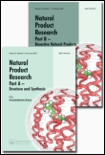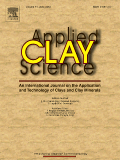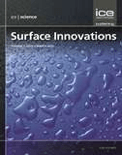
Progress on Chemistry and Application of Chitin and its Derivatives
Scope & Guideline
Harnessing Nature’s Potential Through Chitin Science
Introduction
Aims and Scopes
- Chitin and Chitosan Chemistry:
Research on the structural and functional chemistry of chitin and chitosan, including synthesis, modification, and characterization of these biopolymers. - Biological Applications:
Studies investigating the biological roles of chitin and chitosan, particularly their antimicrobial properties, biocompatibility, and potential therapeutic uses in medicine and agriculture. - Environmental Applications:
Exploration of chitin and chitosan in environmental science, focusing on their use as adsorbents for pollutants, dyes, and heavy metals, highlighting their role in waste management and remediation. - Food and Agricultural Science:
Research on the application of chitin and chitosan in food preservation, enhancing plant growth, and their role in biopesticides and fertilizers. - Material Science and Engineering:
Development of new materials based on chitin and chitosan, including hydrogels, composites, and coatings for medical devices and industrial applications.
Trending and Emerging
- Nanotechnology and Chitosan:
There is a notable increase in studies exploring the use of chitosan in nanotechnology, particularly in the development of nanomaterials and nanocomposites for various applications. - Biomedical Applications:
Emerging research is focusing on the use of chitosan in advanced biomedical applications, such as drug delivery systems, wound healing, and tissue engineering, emphasizing its biocompatibility and functional properties. - Sustainable and Green Chemistry:
A growing trend towards using chitin and chitosan in sustainable practices, including their role in biodegradable materials and green synthesis methods, reflects a broader interest in environmentally friendly alternatives. - Advanced Material Development:
Research is increasingly centered on the development of innovative materials utilizing chitin and chitosan, such as smart hydrogels and bioactive coatings, to meet modern technological demands. - Plant Growth Enhancement and Biopesticides:
Recent studies emphasize the use of chitosan in agriculture, particularly in enhancing plant growth and as a biopesticide, aligning with trends towards sustainable agricultural practices.
Declining or Waning
- Traditional Uses of Chitin:
Research on conventional applications of chitin, such as in textiles and traditional medicine, seems to be declining as more innovative and advanced applications are being explored. - Basic Biochemical Studies:
Studies focused solely on the basic biochemical properties of chitin and chitosan without clear application or innovation are becoming less frequent, indicating a shift towards more applied research. - Single-Component Studies:
Research examining chitin or chitosan in isolation, without exploring their composites or interactions with other materials, is less prevalent, suggesting an emerging preference for multi-component systems.
Similar Journals

Polysaccharides
Transforming Ideas into Polysaccharide SolutionsPolysaccharides is a leading academic journal published by MDPI, specializing in the interdisciplinary field of polysaccharide research. Since its inception in 2020, this Open Access journal aims to facilitate the dissemination of groundbreaking research in materials science, chemistry, and engineering. With an impressive ranking among the top-tier journals—holding the 29th position in Engineering, the 20th in Chemistry, and the 42nd in Materials Science according to Scopus—it offers a significant platform for researchers and professionals seeking to enrich their understanding of polysaccharides' properties, applications, and innovations. The journal welcomes contributions that advance knowledge in polysaccharide chemistry, structural analysis, and various applications in pharmaceuticals, food sciences, and biomaterials. Located in the heart of Basel, Switzerland, Polysaccharides is poised to be a critical resource for anyone looking to stay at the forefront of polysaccharide research and applications, with publications openly accessible to a global audience.

DOKLADY CHEMISTRY
Elevating the discourse in diverse chemistry realms.DOKLADY CHEMISTRY is an esteemed academic journal published by MAIK NAUKA/INTERPERIODICA/SPRINGER, focusing on the dynamic field of chemistry. Established in 1996, this journal serves as a significant platform for disseminating cutting-edge research, reviews, and significant developments in various areas of chemistry, including but not limited to general and miscellaneous chemistry. Currently indexed with an ISSN of 0012-5008 and E-ISSN of 1608-3113, DOKLADY CHEMISTRY maintains a commitment to academic rigor and integrity, contributing critical insights to the scientific community. Despite its Q4 ranking in the 2023 Chemistry category and a Scopus rank of #314 out of 408, this journal remains an important resource for researchers, professionals, and students eager to explore emerging trends and innovative methodologies in the field. The journal operates under a model that supports comprehensive scholarly communication, making it a key fixture among established chemistry publications.

Carbohydrate Polymer Technologies and Applications
Unlocking Potential: The Science of Carbohydrate PolymersCarbohydrate Polymer Technologies and Applications, published by ELSEVIER, is an esteemed open access journal that has been fostering innovation in the field of carbohydrate polymer research since its inception in 2020. With its ISSN 2666-8939, this journal is dedicated to exploring the intersections of analytical chemistry, biochemistry, biotechnology, and materials science, making significant contributions to our understanding of carbohydrate polymers and their diverse applications across various industries. Notably, it has attained a prominent position in various categories, reflecting its quality and impact: ranked Q1 in Analytical Chemistry, Biotechnology, and several Materials Science disciplines, while maintaining strong positions in the Q2 and other quartiles. Additionally, with impressive Scopus rankings—14th in Chemistry (miscellaneous) and 23rd in Analytical Chemistry—it stands at the forefront of scholarly dialogue in these areas, appealing to researchers, professionals, and students alike. The journal's commitment to open access facilitates wider dissemination of knowledge and enhances collaborative research, solidifying its role as a pivotal resource for advancing carbohydrate polymer technologies.

JOURNAL OF POLYMERS AND THE ENVIRONMENT
Pioneering Research for a Greener TomorrowJOURNAL OF POLYMERS AND THE ENVIRONMENT, published by Springer, is a leading academic journal in the fields of environmental engineering and materials chemistry, providing a vital platform for researchers, professionals, and students engaged in the study of polymers and their environmental impacts. With an impressive impact factor, the journal has established itself as a crucial resource in both the Q1 and Q2 quartiles for its respective categories, demonstrating its high-quality contributions to the scientific community. The journal, with ISSN 1566-2543 and E-ISSN 1572-8919, has been active since 2000 and continues to evolve as it converges towards 2024, ensuring it stays at the forefront of innovative research. Researchers will find the journal’s comprehensive analysis of polymers and sustainability foster a thorough understanding of contemporary issues while contributing to the sustainable development of materials. With an ever-expanding repository of open access content, the journal ensures wide dissemination of valuable knowledge, making it an essential aspect of the academic landscape in the United States and beyond.

NATURAL PRODUCT RESEARCH
Elevating Research in Analytical and BiochemistryNATURAL PRODUCT RESEARCH is a distinguished journal published by Taylor & Francis Ltd, dedicated to advancing the field of natural product science through the dissemination of high-quality research. Established in 2003, this journal serves as a pivotal platform for scholars in Analytical Chemistry, Biochemistry, Organic Chemistry, and Plant Science, boasting an impressive categorization including Q2 in Plant Science and Q3 in the other disciplines for 2023. With a current Scopus ranking that highlights its significance within various scientific communities, NATURAL PRODUCT RESEARCH reflects the complexities and innovations associated with natural compounds and their applications. Researchers, professionals, and students will find valuable insights and breakthroughs that contribute to the understanding of bioactive compounds and their roles in health and environmental sustainability. Access options are available, ensuring that the latest findings are accessible to a global audience. As this journal continues to publish until 2024, it remains an essential resource for those at the forefront of natural product research.

APPLIED CLAY SCIENCE
Advancing Knowledge in Clay Science and TechnologyAPPLIED CLAY SCIENCE, published by Elsevier, is a leading international journal dedicated to the dissemination of high-quality research in the fields of geochemistry, geology, soil science, and water science and technology. With its ISSN 0169-1317 and E-ISSN 1872-9053, this peer-reviewed journal has been an essential resource for researchers since its inception in 1985 and is set to continue its impactful journey through 2024. Recognized for its significant contributions, it proudly holds a Q1 ranking in multiple categories according to the latest assessments, including Geochemistry and Petrology, and Geology, ranking 5th and 10th respectively in Scopus. This journal serves as a vital platform for the advancement of knowledge surrounding clay science, exploring both fundamental and applied research that addresses contemporary challenges in environmental and geological sciences. Whether accessed via institutional subscriptions or individual purchase, APPLIED CLAY SCIENCE is dedicated to fostering an open dialogue among scientists, professionals, and educators in the discipline.

Surface Innovations
Innovating Tomorrow's Surface Technologies TodaySurface Innovations, an esteemed journal published by Emerald Group Publishing Ltd, serves as a crucial platform for researchers and professionals working within the fields of Materials Chemistry, Process Chemistry and Technology, and Surfaces, Coatings and Films. Launched in 2013, this journal has garnered attention for its commitment to advancing knowledge and innovation, holding a distinguished Q3 ranking in multiple categories as of 2023. With a focus on the latest methodologies and applications in surface science, Surface Innovations not only facilitates the dissemination of cutting-edge research but also encourages interdisciplinary collaboration among scientists and engineers. While not an open-access journal, it offers numerous options for accessibility to engage a wide array of audiences, making it a valuable resource for those looking to expand their understanding and expertise in this rapidly evolving field. The journal's consistent inclusion in high-ranking Scopus categories further underscores its academic impact and relevance.

REVIEWS IN INORGANIC CHEMISTRY
Exploring Innovations in Inorganic ChemistryREVIEWS IN INORGANIC CHEMISTRY, published by Walter de Gruyter GmbH, is a distinguished academic journal that serves as a vital resource for researchers, professionals, and students within the field of inorganic chemistry. With its ISSN 0193-4929 and E-ISSN 2191-0227, this journal has made a significant impact on the discipline, holding a commendable Q2 ranking in the 2023 category of Inorganic Chemistry, placing it in the 81st percentile among its peers according to Scopus rankings. Continuously published since its inception, with converged years spanning from 1985 to 1990 and 1992 to 2024, it features comprehensive reviews encompassing the latest advancements, methodologies, and theoretical frameworks in the subject. Researchers will find IDEAL insights and valuable discussions that keep them abreast of trends and challenges in the domain, essential for driving innovation and collaboration. The journal’s commitment to quality and rigorous peer review highlights its importance in advancing inorganic chemistry research, making it an indispensable tool for academic excellence.

Journal of Essential Oil Bearing Plants
Connecting Chemistry with Nature's EssenceJournal of Essential Oil Bearing Plants, published by Taylor & Francis Ltd, is a peer-reviewed academic journal that plays a critical role in the field of essential oils and their applications in analytical chemistry, biochemistry, and organic chemistry. With an ISSN of 0972-060X and an E-ISSN of 0976-5026, this journal has been a valuable resource since its inception in 2003 and continues to publish cutting-edge research through 2024. The journal is classified in the Q2 category for Analytical Chemistry and Q3 for both Biochemistry and Organic Chemistry as of 2023, reflecting its high citation impact and relevance in these scientific domains. Researchers and practitioners will find a wealth of knowledge in its pages, showcasing innovative methodologies and findings that advance our understanding of essential oils and their diverse applications. While the journal does not currently offer Open Access options, its rigorous peer-review process ensures that published studies maintain the highest standards of scientific integrity. Located in the United Kingdom, the Journal of Essential Oil Bearing Plants is dedicated to disseminating essential research findings to a global audience, thereby facilitating ongoing dialogue and development in this important field.

JOURNAL OF THE CHILEAN CHEMICAL SOCIETY
Elevating Chemical Research with Open Access Insights.The Journal of the Chilean Chemical Society, published by the Sociedad Chilena de Química, serves as a premier platform for disseminating significant research findings in the field of Chemistry. With an ISSN of 0717-9707, this journal has established its presence since 2003, providing open access to a diverse range of studies and advancements in this vital scientific domain. It currently holds a Q3 category ranking in Chemistry (miscellaneous) and ranks 196 out of 408 in the general chemistry category on Scopus, indicating its valuable contributions to the field. Through the journal, researchers, professionals, and students are encouraged to engage with cutting-edge research and foster collaboration among the scientific community in Chile and beyond. The society's commitment to excellence ensures that articles published reflect high-quality research, underpinning the journal’s role in shaping knowledge and innovation in chemistry.